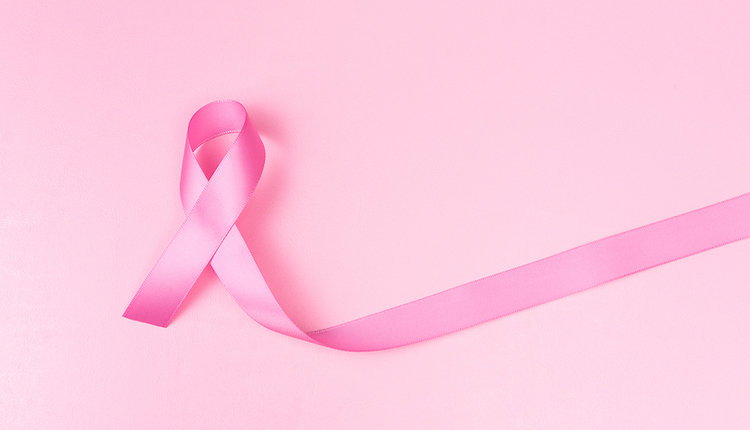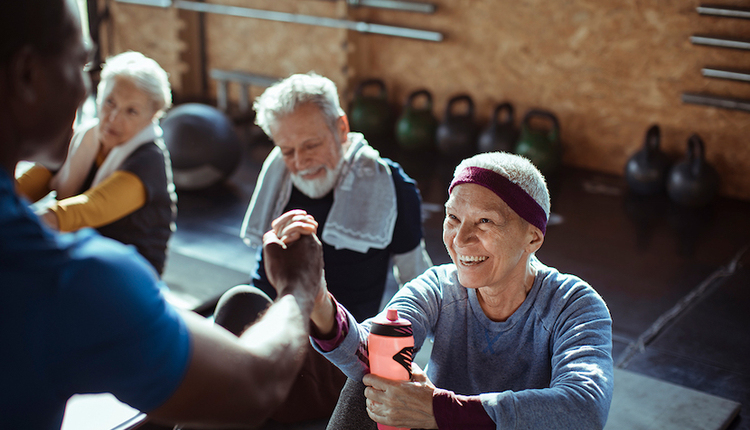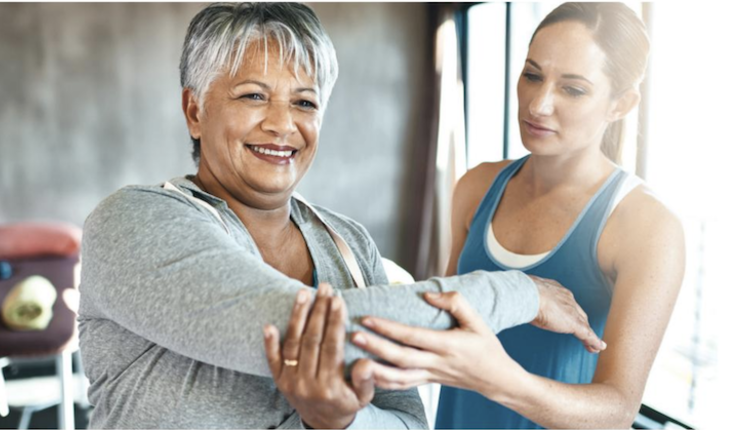
After 25 years of working with cancer patients I would venture to say that only about 90% of them knew what lymphedema was. In honor of October being breast cancer awareness month, let’s take this opportunity to share our knowledge of this debilitating, disfiguring and painful disease with our friends, loved ones and clients who may be at risk.
A good exercise goal, for aerobic activity, is 30 minutes three or four times a week. Choose an exercise that will allow your client to mildly increase their heart rate without “overdoing” it. It is important that they wear their support garment or bandage while exercising. Exercise, in and of itself, will help to pump the muscles, improve circulation, and move lymph from congested areas into an area where it can drain more efficiently. It is important to start out very slowly (limited time and intensity for cardio and just a few repetitions and little to no weight with resistance training) and wait until the next day to see how the affected limb has responded. You can gradually increase frequency, intensity, and time, based on what the limb will tolerate. Have clients take their time and use good form and posture.
Neck stretches — Have your client hold each stretch until they feel a “mild” stretching sensation for 20-30 sec. Repeat on each side.
Shoulder rolls — Have your client lift their shoulders up to the ears then rotate the shoulders back and down, making a smooth, continuous motion. Repeat 5-10 times in each direction.
Isometric chest-press — Have your client place the palms of their hands together, with their elbows bent and arms at or below shoulder level. Have them exhale and push their hands firmly together. Pause. Have them inhale and relax. Repeat 5-10 times.
Wrist circles — Have your client hold their arms overhead and rotate their fist in small circles, isolating the movement to the wrist only. Rotate 5-10 times in each direction.
Fist clench — Have your client hold their arms overhead and open their hands and stretch their fingers, spreading them apart. Then have them slowly clench each hand to make a fist. Pause. Repeat 5-10 times.
Lymphedema is swelling produced by an accumulation of lymph fluid in the tissue. For breast cancer clients, the swelling occurs in the arm (and possibly the pec and lat area) of the affected side due to damage to the lymph vessels in the armpit area caused by the removal of the axillary lymph nodes or from radiation to that area.
If the lymphatic system has been injured, as in the case of lymph node dissection or radiotherapy, the lymph can become backed up. If untreated, the backed-up fluid can provide a breeding ground for bacteria that can result in infection and can delay wound healing. A long-term accumulation of this fluid eventually results in thick and hardened tissues (fibrosis), which creates further resistance to draining the fluid from the limb. While lymphedema may not occur immediately after surgery, it can occur at any time during the client/patient’s life after cancer treatment. Sometimes extensive trauma can be the contributing factor while at other times it may be due to a bug bite, cat scratch or burn.
Upwards of five percent of breast cancer clients are afflicted with lymphedema during their first year after surgery. The lifelong rate for affliction is between 8%-30%. With proper education and care, lymphedema can be avoided, or, if it develops, kept well under control. Older individuals and those with poor nutrition face an increased risk, as do individuals with infections. Removal of the nodes and damage to the area prevent the lymph fluid in the arm from draining properly, allowing it to accumulate in the tissue by restricting pathways and causing backup.
The amount of lymphatic fluid that is transported through the affected areas is directly related to the amount of blood flow to those areas. Heavy lifting with the affected arm or leg, extreme climatic temperatures, extreme water temperatures when bathing, showering or washing dishes, hot tubs, saunas, sunburn, and vigorous repetitive movements against resistance, all of which will increase blood and lymphatic flow to the affected area, should be avoided.
One of the most important, and often overlooked components of exercise is breathing. Not only does breathing allow precious oxygen to be circulated through the bloodstream, but it is also effective for moving fluid through a gentle pumping action of the abdominal muscles. The fluid is pumped through the central lymphatic vessel in the chest cavity, stimulating the flow of lymph. When you breathe in, using your abdominal muscles, the pressure in the chest cavity changes, because the belly breath moves your diaphragm. When you exhale, the pressure changes once again. This back-and-forth alternation in the pressure acts like a pump on the large lymphatic trunk that runs up through the chest cavity and drains into the venous system of the neck.
Following the cardiovascular warm-up, these exercises will help to open-up lymphatic pathways and promote lymphatic drainage. (To see images with exercises, click here):
Pelvic tilt — Have your client lie on their back with their knees bent and feet flat on the floor. Have them tilt their hips so that they are able to press the small of their back against the floor. Have them pause for several seconds then release the contraction. Repeat 5-10 times.Modified sit-up — Have your client lie on their back with their knees bent and feet flat on the floor. Instruct them to maintain a neutral pelvis. Have them keep their neck in neutral and their chin pointing to the ceiling. As they exhale, have them lift up their chest and shoulders, pausing when they feel their abdominal muscles tighten up. Have them slowly lower themselves back to starting position (trying not to rest between repetitions). Repeat as many times as they can comfortably.
Shoulder shrugs — Have your client shrug both shoulders, lifting them towards their ears as they inhale. Have them exhale and depress their shoulders as low as they can (attempting to reach the floor with their fingertips) then return to a relaxed position. Repeat 5-10 times.
Isometric shoulder blade squeeze — Have your client bend their elbows at 45-90 degrees out at their sides (parallel to the floor). Have them exhale and pull them towards the center of your back, squeezing the shoulder blades together. Pause. Have them inhale and return to starting position. Repeat 5-10 times.
Shoulder circles — Have your client hold their arms at or below shoulder height with their palms facing down. Have them make small circles with their arms (keeping arms elevated). Repeat 5-10 times in each direction.
Wrist flexion and extension — Have your client hold their arms overhead and flex and extend their wrists, isolating the movement to the wrist only. Repeat 5-10 times.
This series may be done at the beginning and/or end of each exercise session. There is a great deal more to learn about prior to initiating an exercise program post-surgery/treatment, but this will give you a good start!





















